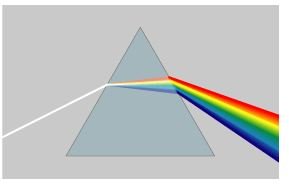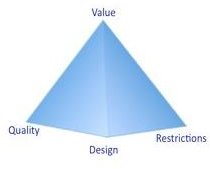Books About Prism Project Management: Background and Resources
How the Prism Design in Lean-Agile Developed
According to Masa Maeda, a self described “avid Lean-Agilist and president and founder of Shojiki Solutions, the Lean-Agile-Prism takes the Iron Agile Triangle of scope-cost-schedule to the Lean-Agile Triangle of value-quality-restrictions–and beyond, to a new Agile Triangle Prism, by adding “design” to value-quality-restrictions.
By adding this fourth element of design to the triangle, in effect, it makes it a prism taking the Agile-Lean process a step further. In an article published by Maeda in the Agile Journal, losing design or attractiveness to projects by the end-user makes for a failed or lost element project.
Beyond Masa Maeda and his analysis of prism project management, Jim Highsmith, Ken Schwaber, and Robert K. Wysocki have all explored the theory in their prism project management-related books.
All of these authors, who are immersed in the Lean-Agile Management methodology, consider that without a good and effective design as an added element in the Agile triangle, something is left out—design.
If any software or project is completed through the Agile process and the design isn’t attractive and easy to use, the value and quality of the outcome won’t be utilized.
Most people have faced dealing with ineffective user interface software design where problems or failures have led us to give up on the software. This too can be applied to the project management world; if the end product isn’t attractive or has usefulness and is reliable, how well will it be accepted?
Read Prism Project Management Books
To gain a better knowledge on how the design element should be added to the Agile Triangle, here are some books available from Amazon to get you started:
- Agile Project Management: Creating Innovative Products by Jim Highsmith
- Agile Project Management with Scrum by Ken Schwaber
- Effective Project Management: Traditional, Agile, Extreme by Robert K. Wysocki
More of an Art Than a Science
Scott W. Ambler, in his project management prism book, Agile Modeling: Effective Practices for Extreme Programming and the Unified Process, calls Agile modeling more of “an art than a science.”
Basically, if the user interface isn’t “designed” correctly or accurately through Lean-Agile, how well does the software work or who will even want to use it? In his chapter on Agile Analysis and Design, readers can explore the importance of design in the Agile process is essential to developing and understanding the all-important prism: value-quality-restrictions-design.
Alternative Solutions

An Internet search for Prism Project Management will bring project management solutions companies. While these companies do offer Agile approaches to management, most use the word “prism” as the type of technique utilized instead of the element in the triangle.
Ultimately, both IT developers and project managers should decide upon the importance of adding a design element to the Agile Triangle. Before you say, “What about Agile user stories,” an exploration into prism project management books not only will guide you, but also will offer alternative solutions to your Agile projects.
